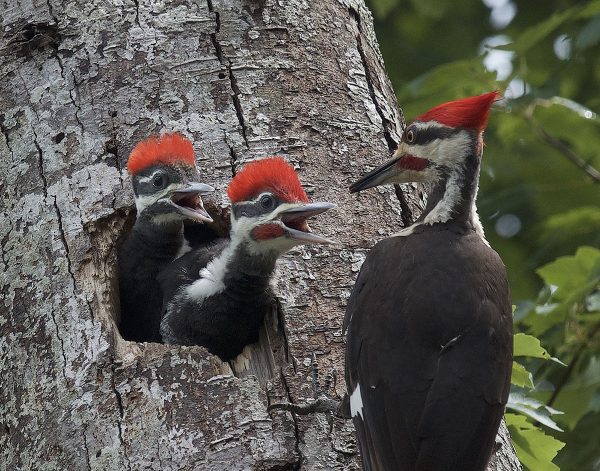You can give to wildlife and give yourself a tax break. That’s right! You can donate directly to Virginia’s Non-Game Program or, if you have a tax refund coming, you can designate any portion or all of your tax refund to support the management of non-game wildlife in Virginia.
If you do not want to wait until tax time, you can donate directly to the program by sending a check to: Virginia Department of Wildlife Resources, Virginia’s Non-Game Program, P.O. Box 90778, Henrico, VA 23228-0778, or you can make a donation online. You’ll get a receipt for your donation, which you can claim on your next year’s federal and state tax returns.

Photo by Una Davenhill.
What is non-game wildlife?
The designation “non-game” is for those species which are neither hunted, trapped, nor fished. It includes threatened and endangered species such the peregrine falcon and the northern flying squirrel, but it goes even further than that. Virginia’s Wildlife Action Plan website will give you an idea of the scope of the species that will be helped by the non-game wildlife fund.
Why is it important that Virginians contribute to the non-game wildlife fund?
For many years, biologists with the Virginia Department of Wildlife Resources have managed both game and non-game species with money from license fees and federal taxes on guns, ammunition, archery equipment and fishing tackle. Since 2000, Virginians have further contributed to the work by the Department through a portion of state sales tax on hunting, fishing, and wildlife-watching equipment, which goes to both game and non-game management. In more recent years, additional sources of federal funding (State Wildlife Grants) have been made available to the Department specifically for management of non-game species. Overall, much of the management work for threatened and endangered species research, and non-game species in general, has been supported in large part by federal funds. However, times have changed and the federal budget continues to reduce much-needed funding for critical wildlife management work. Contributing to the non-game wildlife fund provides Virginians with an additional means of supporting the Department’s efforts to conserve wildlife.

Photo by Ken Cohen.
How will your donations to the non-game wildlife fund be used?
Virginia’s Wildlife Action Plan identifies declining or vulnerable non-game species in the Commonwealth that, in addition to on-going work with game species, will be the priority for the Department’s conservation programs for the next ten years. Different species may require different actions, which can include inventories, research and monitoring, creating awareness through education and outreach programs, technical assistance for landowners, habitat management, reintroduction or translocation of species in appropriate areas of the state where they have been absent, and leasing, buying and entering into cooperative agreements for land which provide critical or key habitat for certain species.
These are only a handful of the examples of how your contributions may be put to use. What the Department and its staff of skilled biologists are striving for is an integrated approach to management that includes both game and non-game wildlife.
Make a Donation Online
